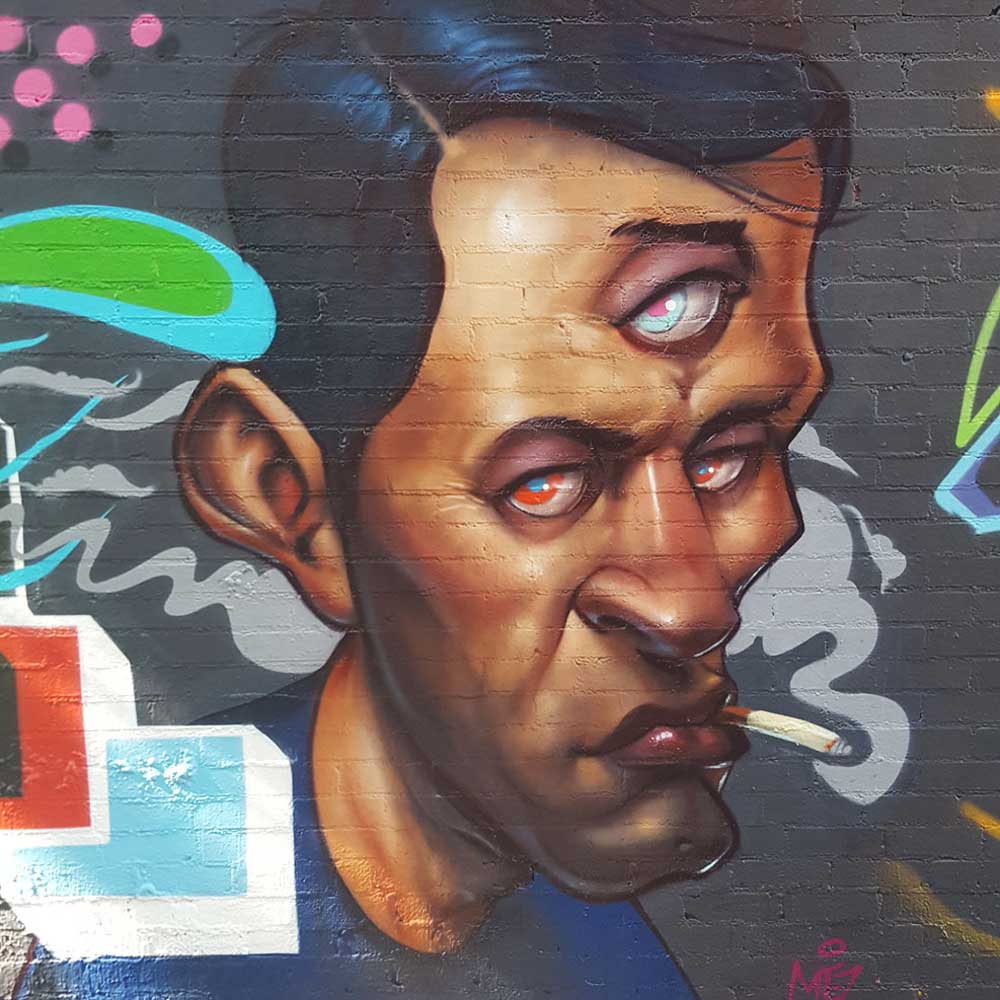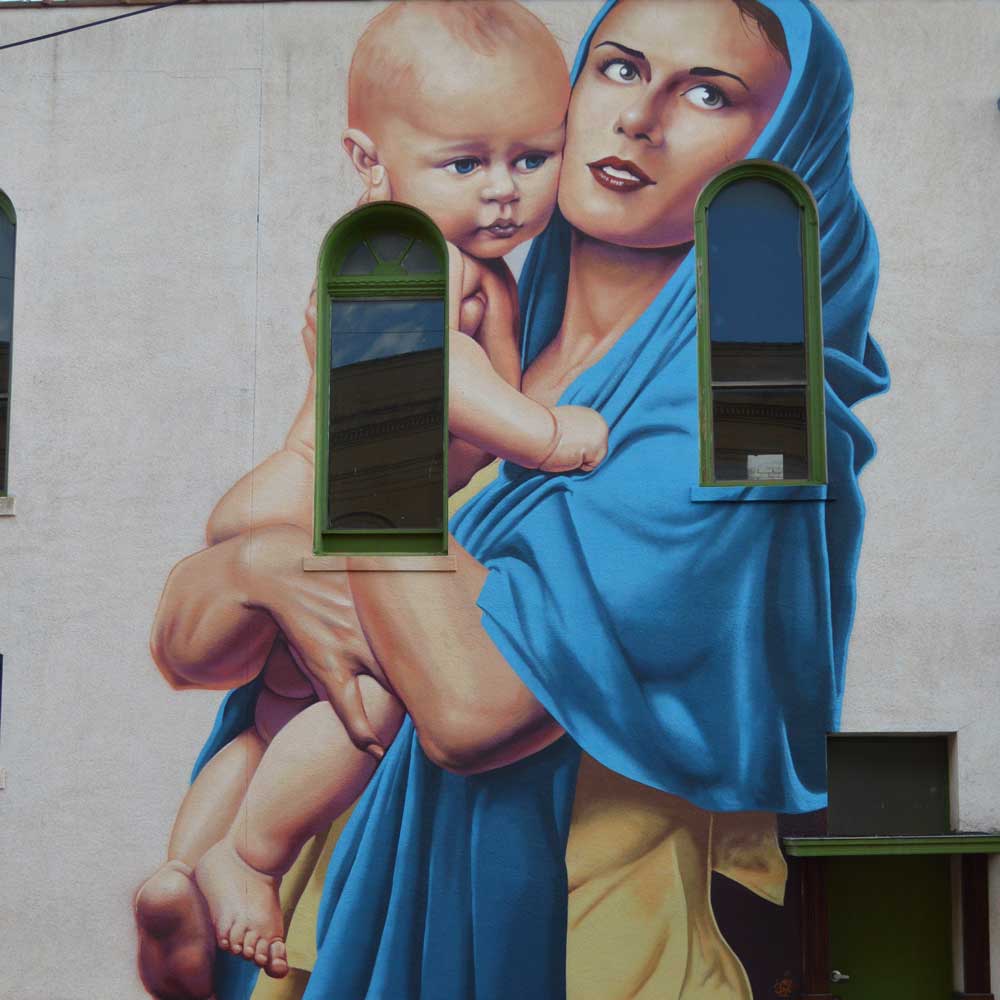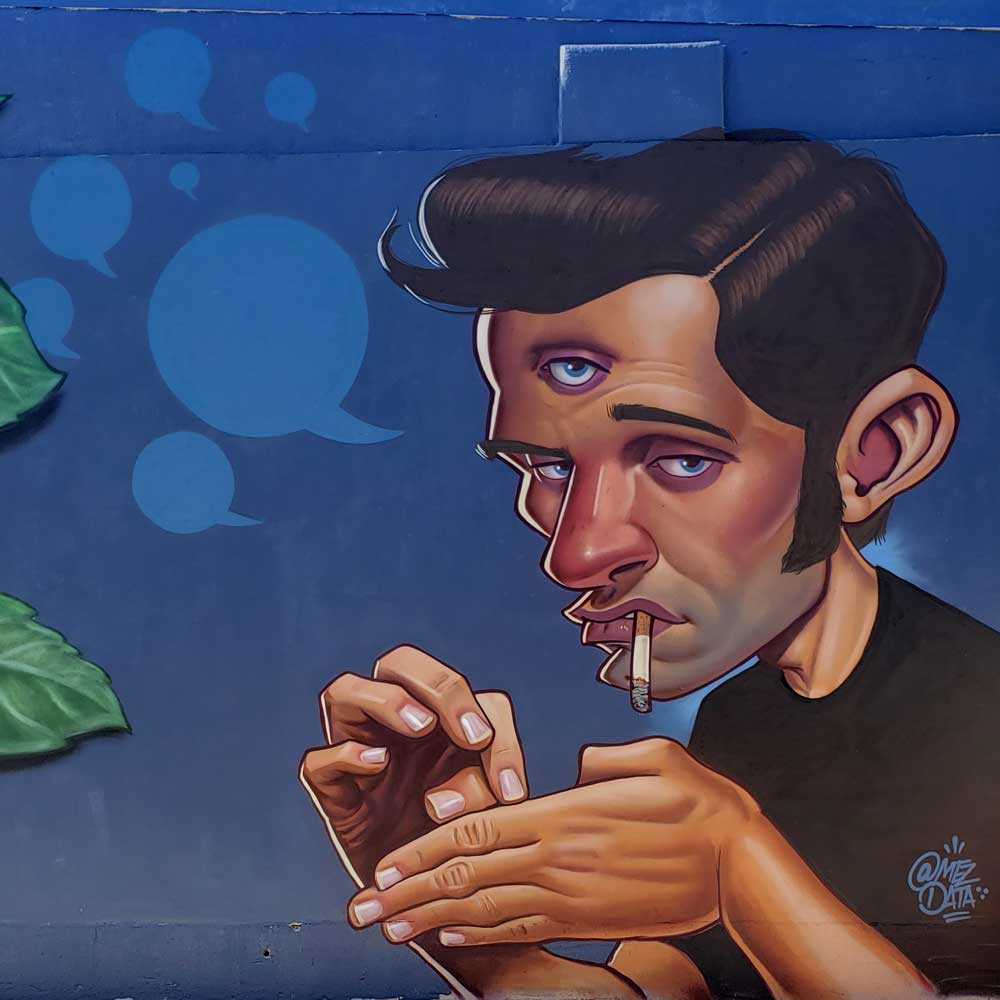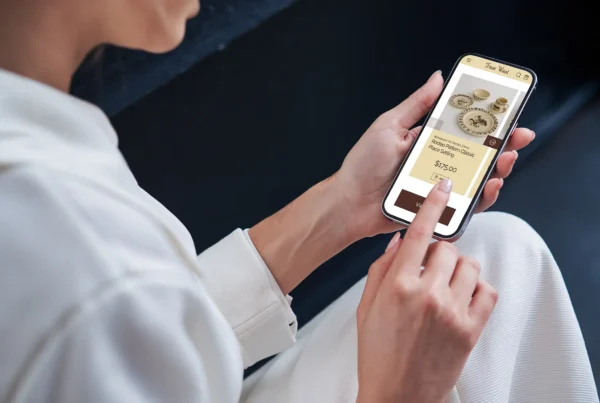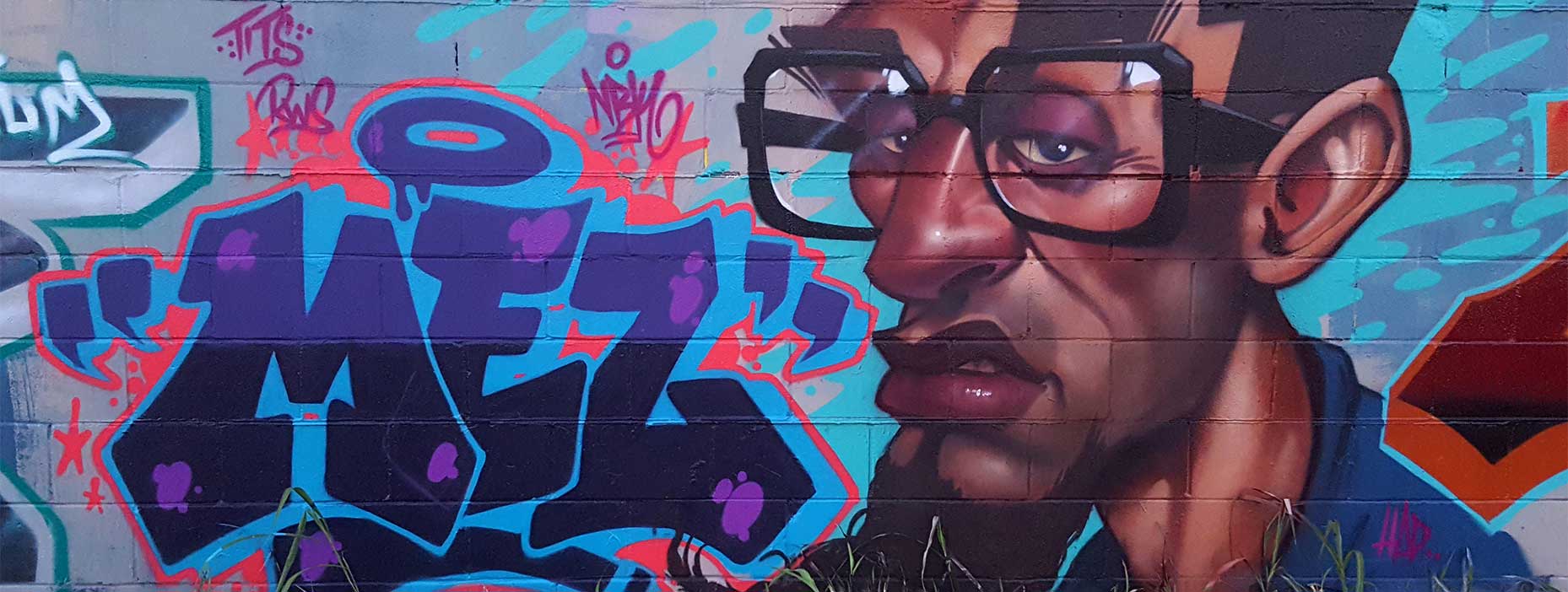
With decades of experience, and thousands of pieces produced, Mez Data is one of the most recognizable names on the Austin graffiti scene. You can find hundreds of his murals and productions all over the city, and they are pretty hard to walk by without stopping to admire Mez’s work.
He built a prolific business as an artist, works as a DJ occasionally as well, and is one of the creatives that inspire us to do our jobs better. Please meet our friend and Austin’s very own legend – Mez Data.
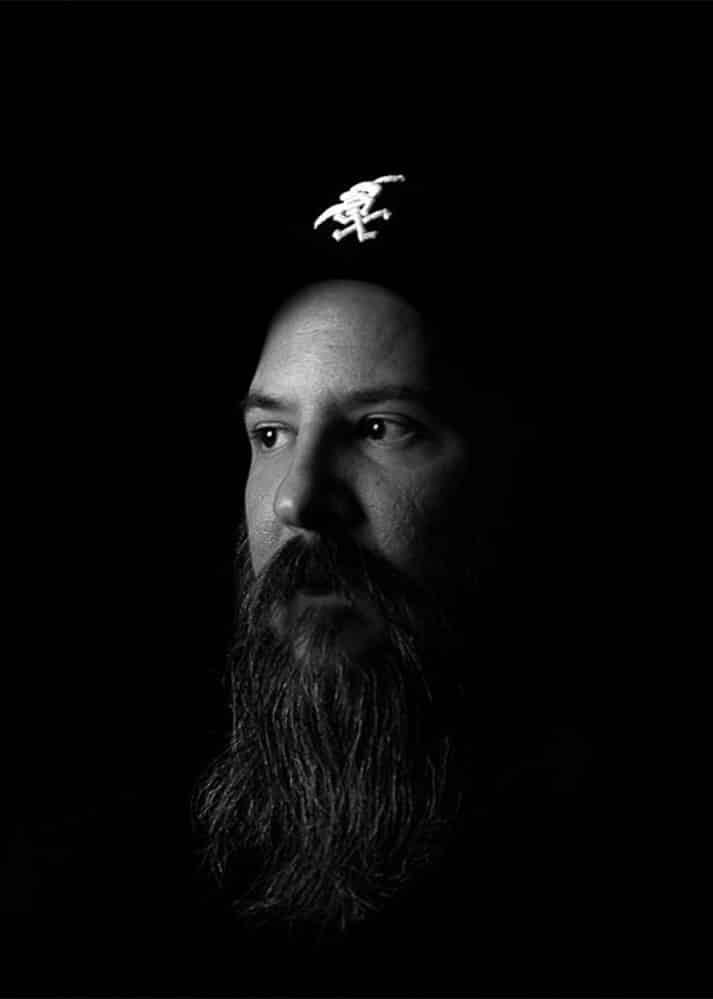
LPC: Mez Data is a well known name in Austin. Your graffiti pieces, murals and designs are hard to miss in Austin. I have no idea how many murals and refineries. At this point, I guess maybe you’ve even lost count. Do you recall your first piece at all?
Mez Data: I did my first graffiti piece in 1996. That’s when I officially got into graffiti.
I’ve been dabbling with graffiti style, and kind of art, a couple years before that, but it was mostly drawings in like black books.
But my first actual spray paint on walls, like graffiti graffiti, was in ‘96.
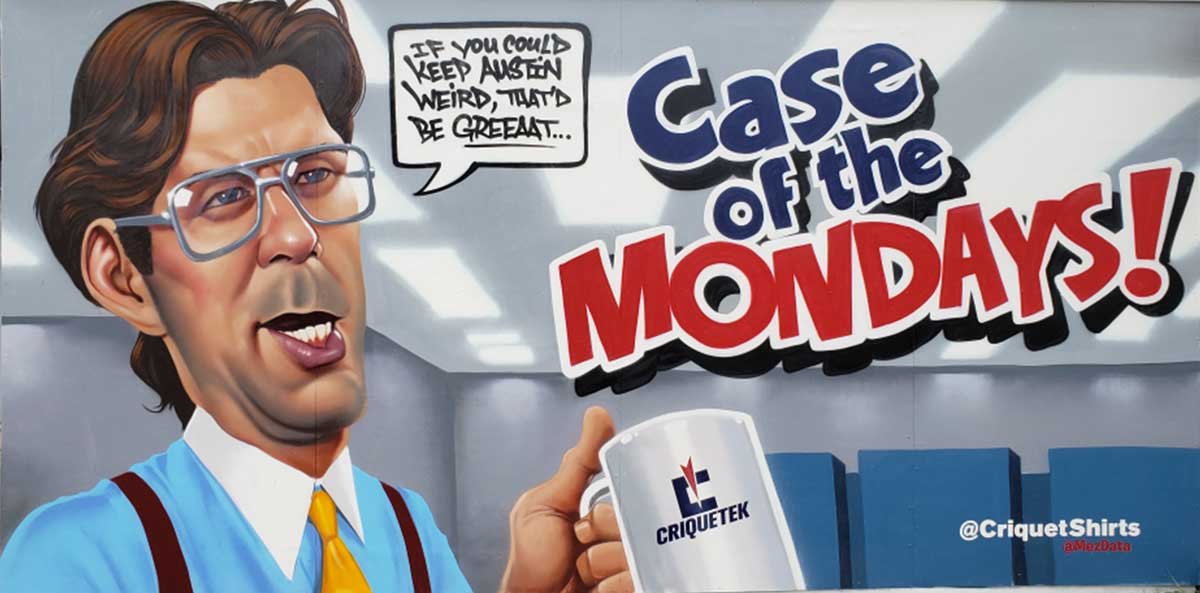
LPC: But you were always a creative individual?
Mez Data: I was always into art. I mean, before I could even remember. I heard stories from my mom and family about how I excelled at art even at a super young age. So that was always my thing, like doing art, but I got into graffiti through hip hop.
I’ve been a DJ for a lot of years, but I was always really into music as well as a kid. And I got into hip hop really early in life. Also I would say early in hip hop as a whole as well. I started reaching that age in the late eighties when hip hop pretty much started.
I was right there in it. And I started seeing some kind of graffiti in hip hop music videos. And then, like early, early nineties, the Source magazine, that big hip hop magazine, had a one page layout in each issue.
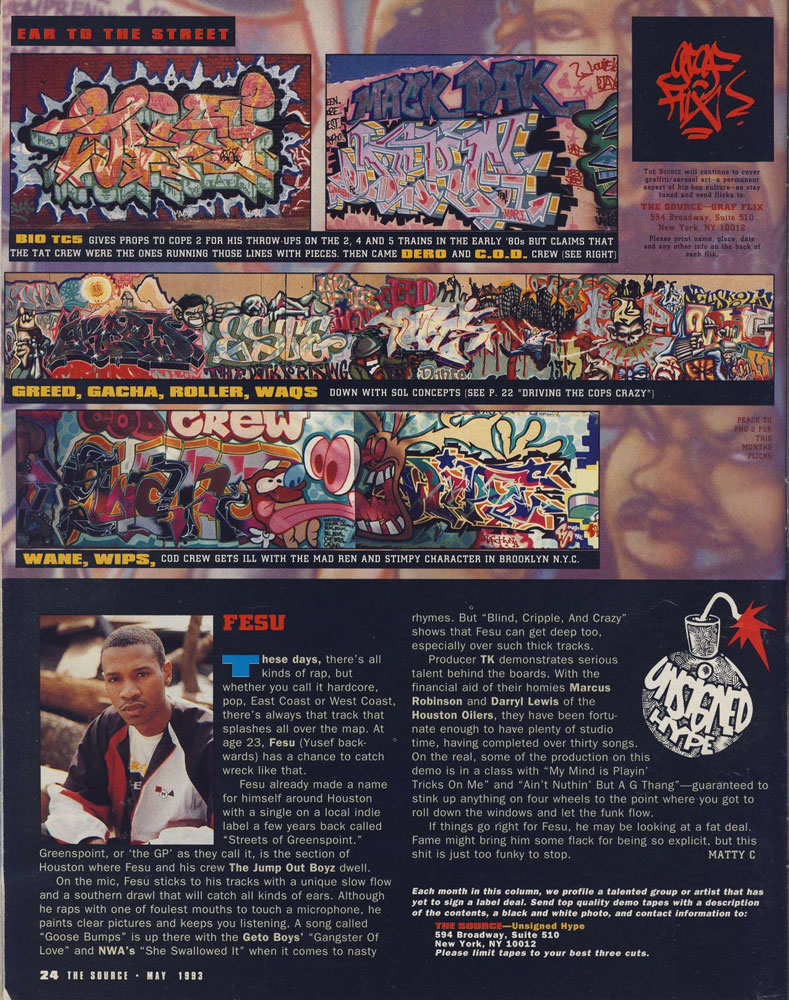
There was just a ton of New York graffiti stuff. And I used to get the Source magazine just for that one page to look at the graffiti. That’s what kind of set it off was that graffiti page that just sparked my interest.
But the first time I kinda came across my first bit of graffiti in person, this was actually before the Source, it was in one of my neighborhoods in Houston. I saw this graffiti and I remember being like, “what is that?!” to like one of the older kids in the neighborhood. And he’s like – oh, that’s this guy’s name.
At that time I was so young, I didn’t f****** register that! I was like – what? But it was cool as hell. And it was a real piece, like a legit piece.
LPC: What do you call that style, was it just a tag?
Mez Data: Well, a tag is just essentially your signature or whatever.
But your piece is like the full on color, big block letter, you know, wild style. That’s what we call a piece – like a five foot tall or bigger, fully rendered graffiti.
And a tag is just like a signature.
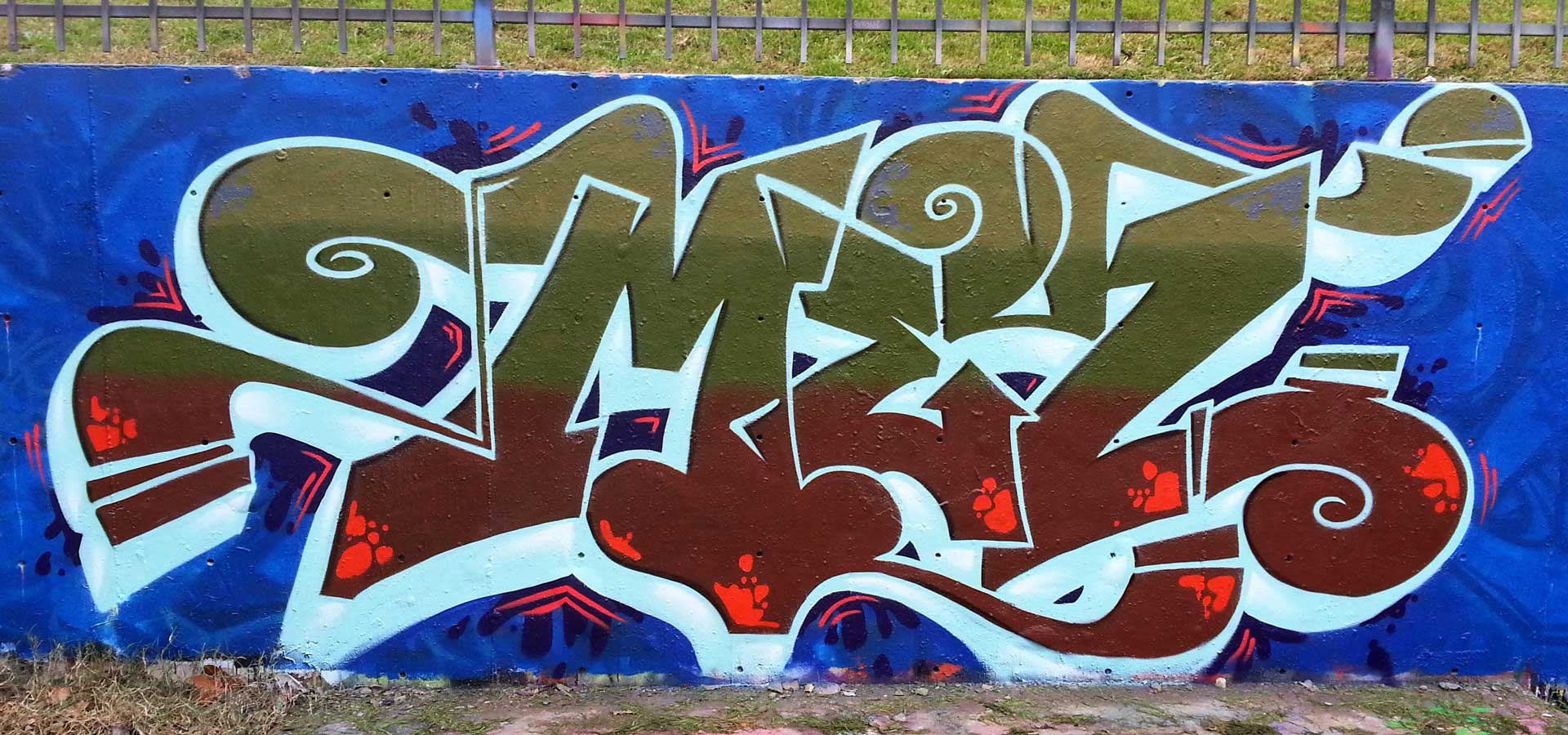
LPC: Yeah. How did you come up with your tagline, Mez Data?
Mez Data: I was trying to come up with a name and, you know, I’d kind of played with different stuff. My last name is B E R M E L. And the way I would write it, it looked a bit like B E R M E Z to an untrained eye.
So someone said that to me, and I thought – huh, Mez? That’s a good graffiti name. Because it’s pretty short. And it doesn’t really mean anything and it’s kind of cool sounding. Eventually I just dropped B E R left M E Z, and that was where it came from. Essentially, it was just a misunderstanding of my last name.
LPC: What was your first contact with the graffiti scene? Can you recall some of your earliest drawings or pieces? Are any of them still on the walls somewhere?
Mez Data: The stuff I made in the nineties – I believe that’s all gone. The closest thing I found was something I had done in like 96 or 97. I was in Missouri and I’d done a piece underneath a drainage tunnel.
And I was up there two years ago for a job, and I took like a two hour trip to this town to see if it was still there. And I found it! You could just see the last letter, everything else had been written over. But there was that last letter with some other tags and stuff over it, but you could still see the remnant of it.
I remember I was like – wow, that’s crazy. That’s the oldest thing of mine that exists. I couldn’t believe it. I took a picture and sent it to a couple people. I think I made this back in 97.
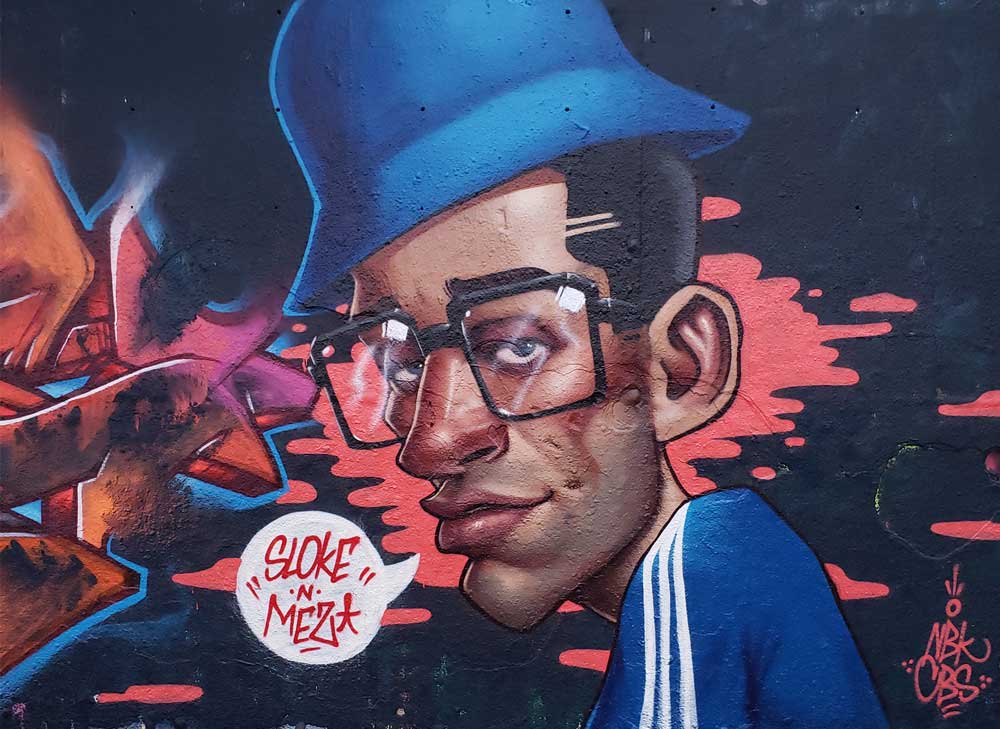
LPC: Cool. So who’s the No Boundaries Krew?
Mez Data: No Bounds crew started in, I believe, 94, and I think it was the first real, graffiti group. I am not sure if it was the very first, but it was definitely the first great collective of artists.
There were some great guys before, like Rage and Sec, for example. But NBK was the first crew to really be a force to be reckoned with. And they really put Texas on the map. They were just crushing everybody.
NBK went to an event that they used to hold up in St.Louis back in the nineties. I think it was called Paint Louis. That’s where NBK did a big production. Production is what we call it when everybody in the crew paints together, just FYI.
Everybody from the West coast and East coast were in town to witness that. Back then, the entire Hip Hop scene was dominated by the west coast and east coast. New York, you know, Jersey, Philly on one side, and then the west coasters who adopt things rather quickly because of the media basically.
So no one knew about the Midwest of course, and when NBK just came on the scene, NBK put Texas on the map.
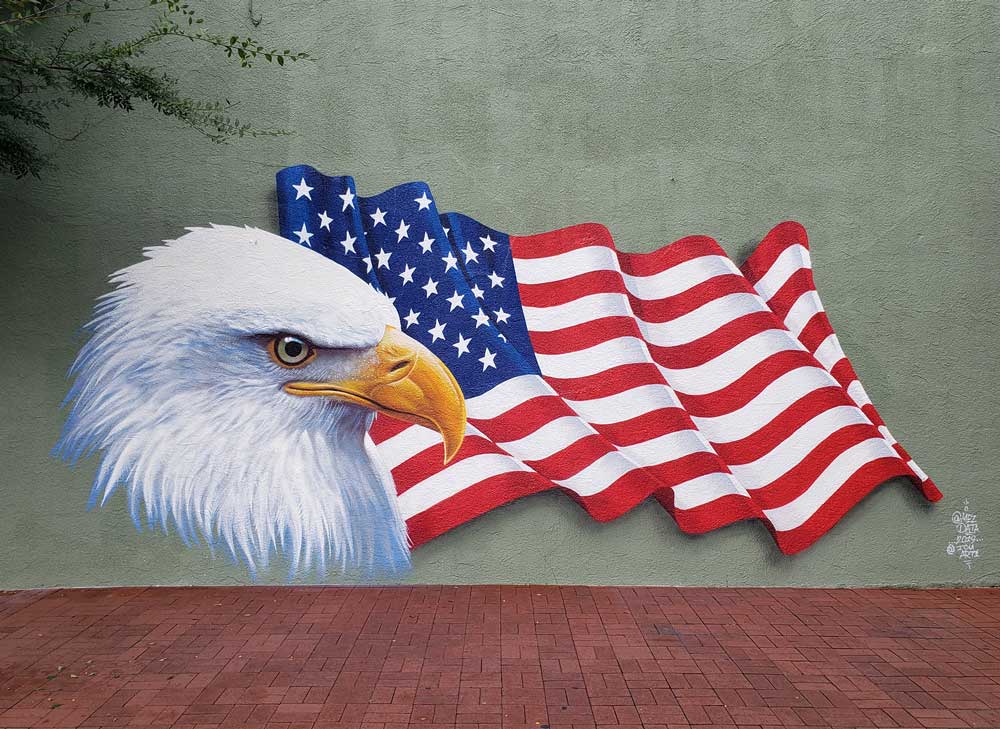
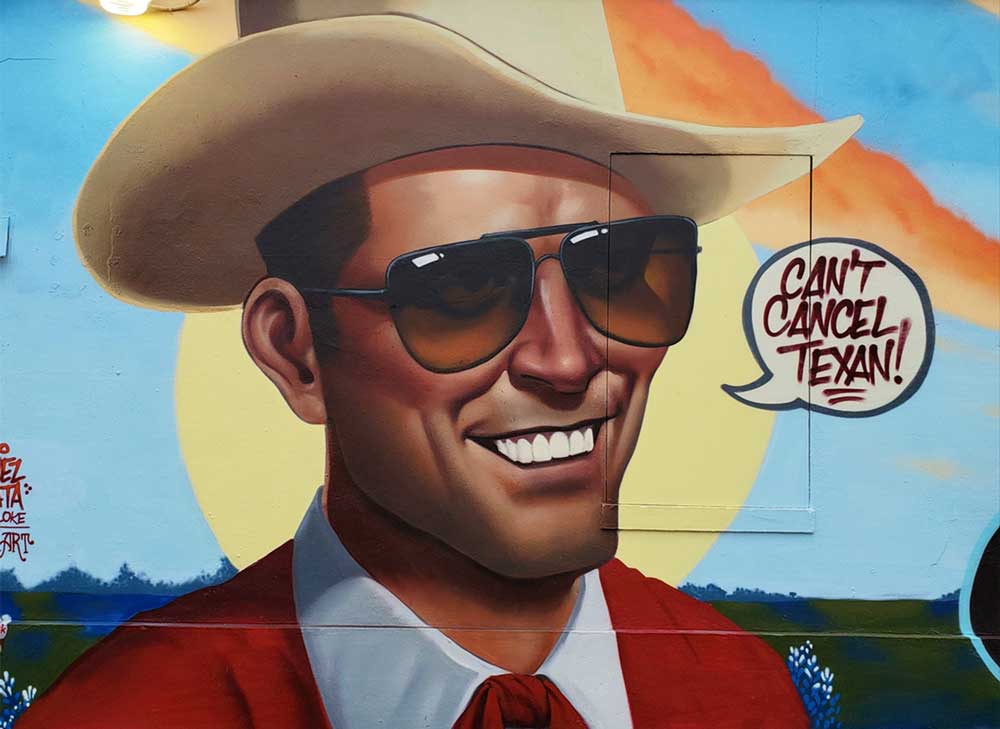
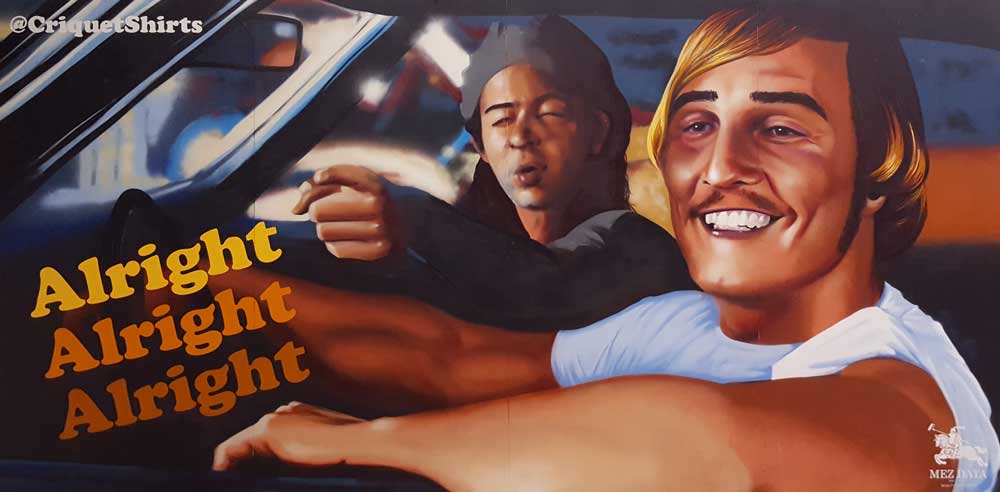
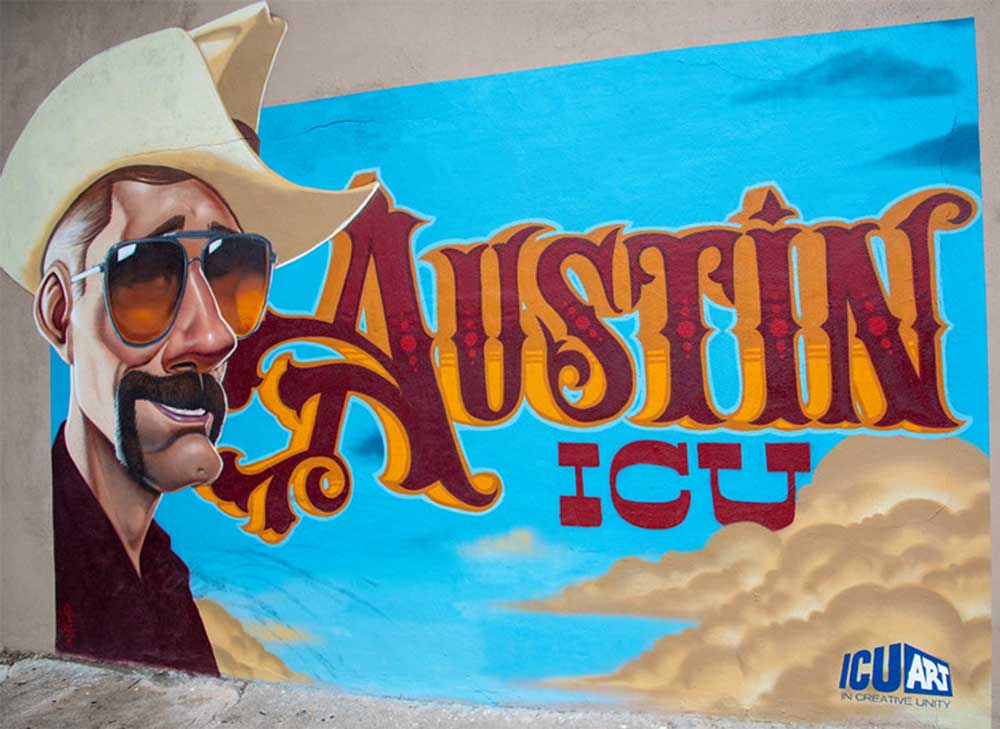
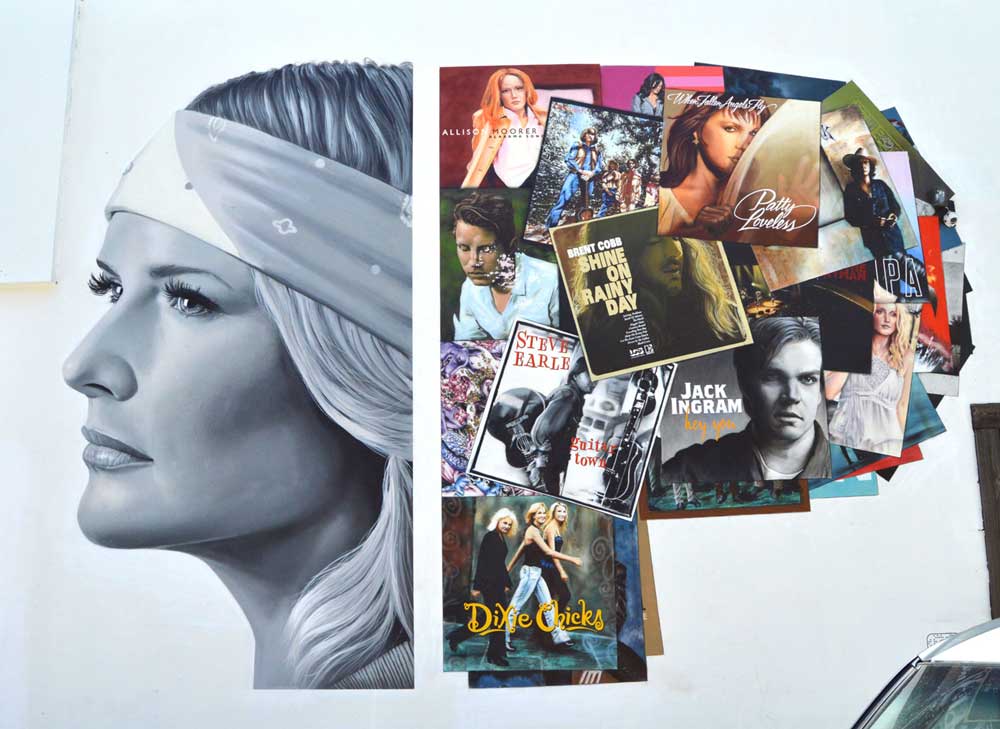
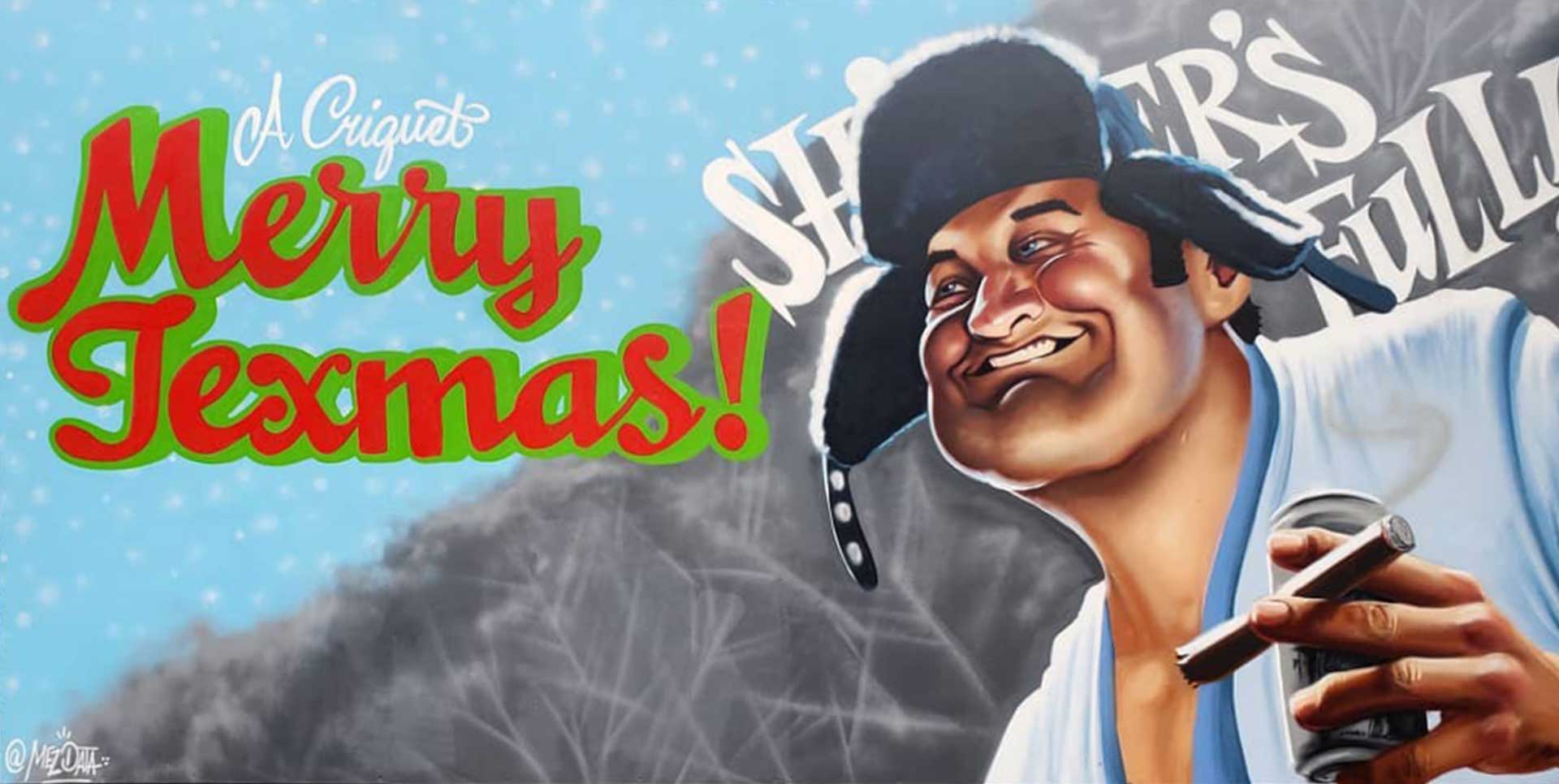
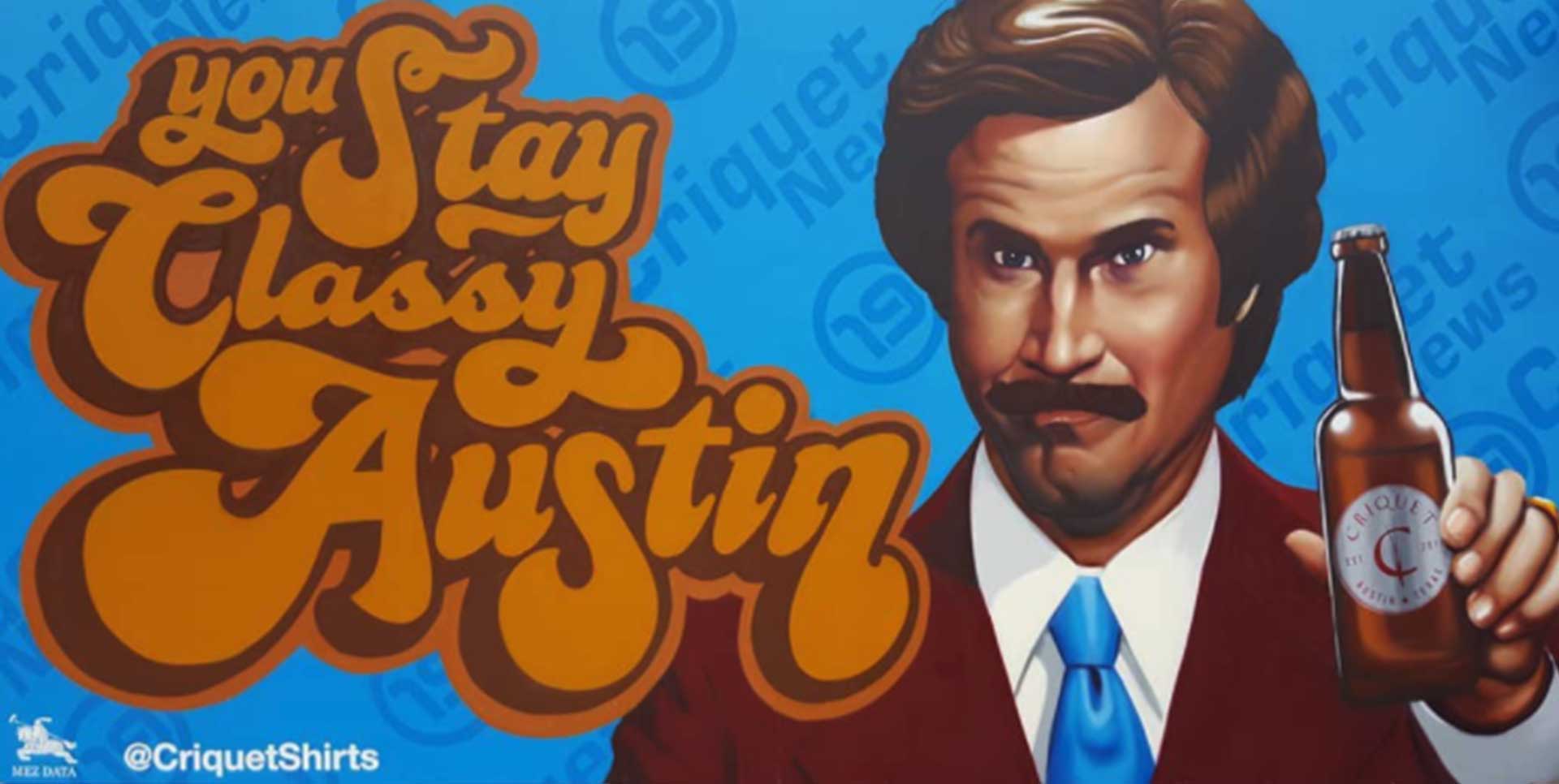
LPC: Okay, so obviously you’re a huge hip hop fan. What are the artists that you’re listening to nowadays? Is there any particular MC or group that you’re listening to when you’re working on your stuff?
Mez Data: To be honest with you, I don’t do a lot of hip hop anymore.
Hip Hop was what kinda got me in everything, and I still listen to a little bit of it, especially the golden era and some newer artists, but I’m more into jungle music. In the mid nineties I became that drum and bass/jungle guy.
But usually if I’m in a mood to like graffiti though, and paint, it’s something that gets me hyped up.
I’ve always kind of had one foot in the hip hop world, especially through graffiti. But my own personal stuff was more like drum and bass and bass music and stuff, and I was always more on the producer side of hip hop.
I like the beats and turntablism more. In the late 2000’s, between 2009 and 2013, I DJ’ed for my friend’s hip hop group called the Testarossas. So I’ve always been involved in a way with hip hop or like dealing with the b-boys city events, doing graffiti for that.
Hip Hop is always in the mix, you know? And I still like some stuff like Action Bronson and Meyhem Lauren… And in the early two thousands, I was really into Company Flow and Cannibal Ox and all the LP stuff.
LPC: Ok, so this leads into our next piece. We wanted to just pretty much ask you about some of the pieces that are on your Instagram profile and ask you to provide us with some context to your work.
The first one has to be the MF Doom piece. MF Doom is one of those underground artists that became famous without going commercial. In a way, Doom stayed true to his style. What inspired you to draw his character?

Mez Data: I did it when he passed away. I was a big Doom fan. That’s the kind of Hip Hop that I really love. I love Doom’s music and the production and just his crazy rap style. Nobody has been like him before or since, you know what I mean? And his persona, with the mask and everything, was just super unique and cool.
I don’t usually mess around with a lot of the pop culture stuff, especially when somebody passes away. But I try to do the things that really speak to me, or that I’m actually into. I’m not doing it for clout.
I only do the ones that I’m into. I noticed over the years, especially with things like Instagram and stuff, that people will really jump on anything just to get likes and views. And I only do it if it’s somebody that I’m into. So when Doom passed, we were all painting a wall and I was like – oh, I’m going to do a Doom. And the Doom that I did was my Doom. I made him a bit cartoony, and then instead of the jewel on the helmet, I put my signature third eye.
LPC: On the other side of the Hip Hop spectrum, we have Soulja Boy. Can you tell us a bit more about this piece?

Mez Data: Yeah, that was a commission piece. That one was for a Red Bull campaign. Red Bull had commissioned me to do the Soldier Boy poster for some concert. That one’s actually kind of funny because the picture that I have on my Instagram was the draft they didn’t want to go with.
I hollowed out the character’s eyes and then the soldier boy text is a, is like a cool hand style chisel tip tag and that was my final design that I sent them. But then the red bull and soldier boy made me change it to have his real eyes. So that, so that’s like the artist’s proof poster.
LPC: While we were on the topic, when you’re doing these commissions and commercial work, does that kind of censorship mess with your creative process?
Mez Data: A little bit, yeah. That’s why I posted my initial version on Instagram, because I thought it was way better.
Sometimes it doesn’t bother me ‘cause it’s the nature of the beast, but sometimes, you know, it can be bothersome if I feel like it’s not a good call. Like I felt with the soldier boy, my version was just a better look and a more creative, unique poster than just a picture of him with those hollowed out eyes.
So when they just did a regular Sans Serif font and made me put the regular eyes on it, I was like, well, that’s not very interesting.
LPC: Which tools do you use to create your digital pieces?
Mez Data: I’ll draw them with a tablet. Basically, I’m drawing them by hand, so I treat them like a real painting where I don’t mess with filters.
I tried to do everything in as little layers as possible. Like usually just a background layer and then the subject layer and I try not to use too many of the capabilities that Photoshop offers because I want to keep it as true to a painting as possible. I also don’t want to fuck my mind up either where I’m like actually doing a painting and then I fuck up and I’m like, oh, control, delete.
LPC: The next one is Lemmy. Are you a fan of Motorhead or what’s the story behind this piece?
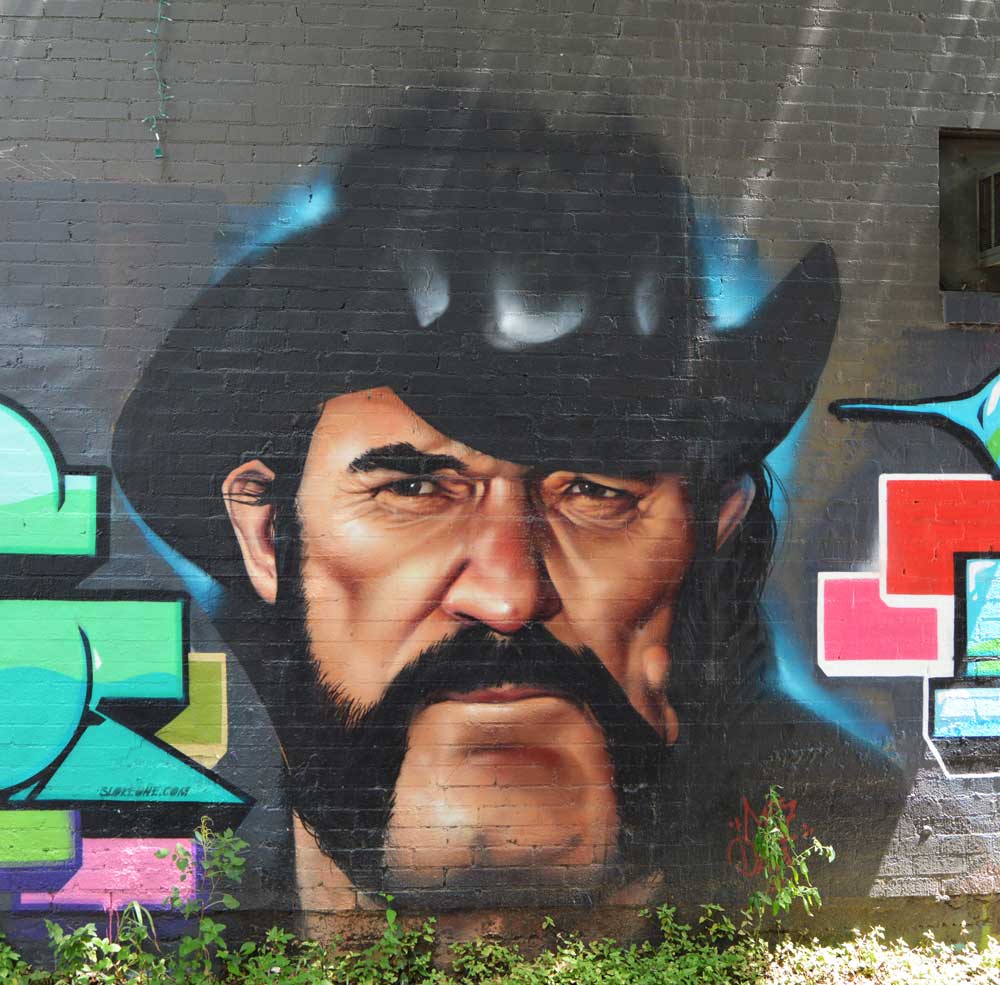
Mez Data: I’ve always been super into music, so, you know, I’ve always liked Motorhead and Lemmy. When he passed, that one kind of hit me too, because I feel like he was very iconic in both metal and music as a whole. He was a very unique character and he did things his way.
I actually did that one from this little photo on my phone that I got of Lemmy and I just freehanded that one from that little picture. I tried to take like a Sebastian Kruger approach to the Lemmy one where I was doing a mix of a character and photo realism.
LPC: So, what would you say has changed at the game over the years? Are there fewer writers now? Or is there anything significant that has changed since back when you started in the nineties?
Mez Data: I think the biggest change now is sort of the commodification of it, that it’s kind of become popular in a way where people are just jumping into it for clout or to be cool, or to make money, whereas, back in the day there was no kind of fame except amongst other graffiti writers. So you only did it for yourself and your peers.
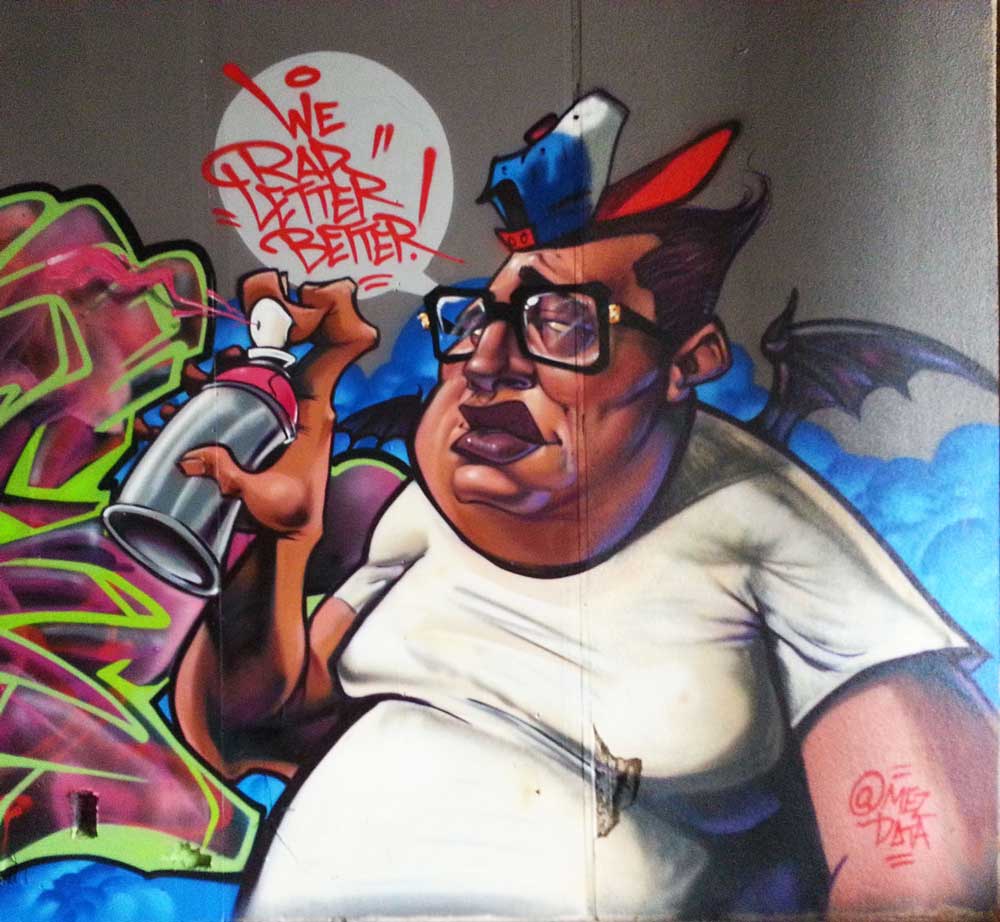
Where now I see, it kind of gets mainstream and now people are getting into it thinking like, oh, I’ll be rich or that they’re doing the work to post on Instagram.And it’s like, that’s not what we did this for.
We’ve also seen the rise of what we call street artists or muralists, where it’s people that don’t understand the foundations and the rules and just go and do murals and gigs to try to get paid.
LPC: Yeah. So that brings us to the business of graffiti. How do you get commercial work?
Mez Data: It’s mostly just word of mouth and referrals, I don’t really do any marketing or any of that.
I feel like there’s a little bit more authenticity to it having that organic method, as opposed to selling. I’ve told people that one way that I think about it is like, Do you ever see a commercial on TV for Aston Martin?
You don’t because the people that want an Aston Martin already know about Aston Martin, but you see a commercial every hour for Hyundai and Hyundai is a cheap little shitty car. I love that analogy.
LPC: So are there any commercial projects that you’re particularly proud of? Maybe the Batman mural?
Mez Data: Oh, that was a good one. I did enjoy that Batman one. Also, the She’s Not Here restaurant.

We’d originally discussed me doing that entire wall inside but I simplified the piece so it was clean and open and airy, because it gave it that openness that you would have on the beach.
I think about a lot of that stuff when I produce these projects that people don’t necessarily think about like, how a piece is going to work in a space? I also consider whether it is too much or if it is not enough?
So the Batman one, the dimensions that they’d commissioned me for was a horizontal, you know, it was a landscape frame, because they wanted bat wings. They wanted the Batman symbol bat wings that people could stand in front of and take photos for Instagram.
Initially, I was like – no dude wants to stand in front of wings. Then, I had an aha moment and took their landscape, flipped it upward into portrait and then made Batman with his chest piece. So if you stand there in front of itt, you have wings or if you don’t want to do it, you have an awesome picture of Batman.
LPC: So who commissioned you for that?
Mez Data: It was WB, DC Warner brothers.We did that for Batman’s 80th anniversary that was kicked off here in Austin for SXSW.
LPC: Does it pay today to do murals and graffiti?
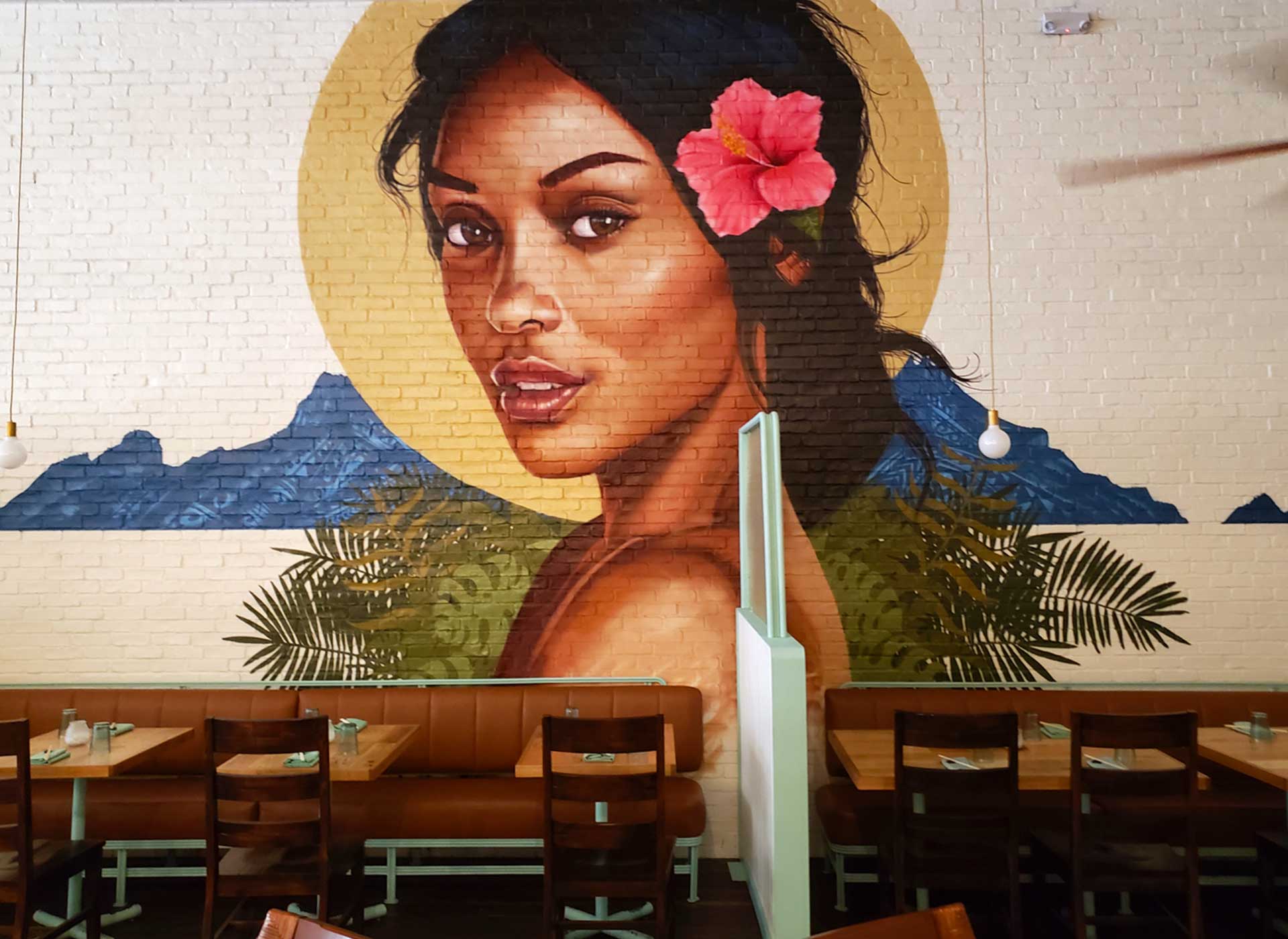
Mez Data: I mean, yeah, there’s a lot of people that do it for the love of their artwork that don’t get paid, and then, there’s the business side of it. I do a little bit of both, like I go paint with my homies for free and do a production so that we can make whatever that we want and just have fun together.
Each job is different, you know, some pay better than others. I think it depends on your level, like how good you are, how good a name you have. There’s some people that make a shit ton of money and then there’s other people that are newer or not as good that they still have to have a side hustle.
I’m pretty lucky where it seems like I’ve constantly had something, either a mural or a commission. A lot of my clients, I have to put on a wait list. Also, I don’t think people realize that, for lack of a better word, you can’t just pull shit out of your ass all the time. Some murals and designs take cultivation and they take time to render and develop.
The Batman one, for example, came together pretty quickly, just given the nature of SXSW.
Sometimes preparation is doing a miniature of that drawing, which takes time. It can take hours or days to create a drawing. I think some people think that, it’s just like, oh, you press a button and then boom, there’s an image. And it’s not really not really like that.
LPC: I do have one more question-is there a way that we could support the graffiti community, other than sharing your stuff online?
Mez Data: I would say the best way that people can support artists is to buy their art. Like don’t buy prints from Ikea, find artists and buy their art.
